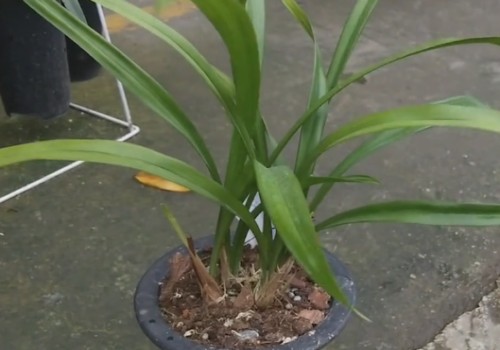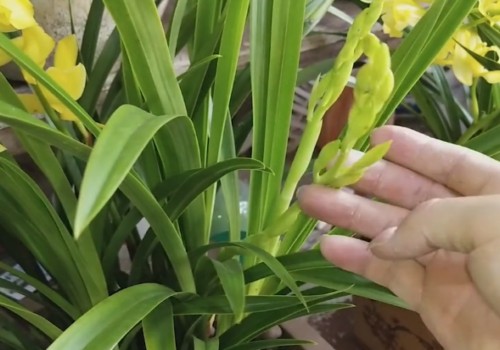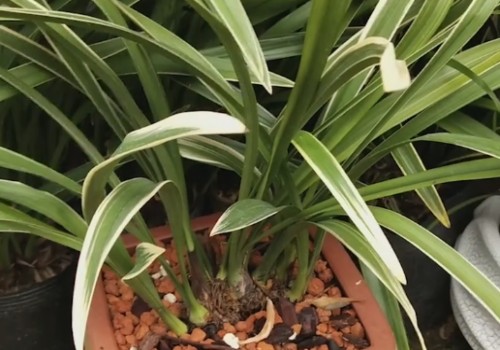What if the orchid gets sick?
Orchids have always been loved by the majority of basin friends, but in the process of planting and cultivation, plants infected with soft rot and stem rot are also the biggest headaches. Today, the editor will give you advice to help you solve these two most troublesome problems and help you protect your beloved potted orchids.

If the leaf roots of orchids are blackened and yellowed, and yellow leaves appear from top to bottom, the most common reason is that the plant is infected with soft rot or stem rot. So, what if the orchid gets sick? No matter what kind of disease we are infected with, we need to treat it in time.
The treatment of soft rot usually requires the use of anti-bacterial drugs, such as copper hydroxide, king copper, amber fat copper and other copper preparations, while the treatment of stem rot usually uses antifungal drugs, such as carbendazim, chlorothalonil, potassium permanganate and so on. It can be seen that for different types of orchid diseases, we need to use different drugs.
In the warm environment of poor ventilation and excessive humidity, potted orchids usually breed a large number of anaerobes, and a large number of spores will continue to reproduce, thus making the orchids sick. Therefore, in order to avoid orchid infection, smooth ventilation is a condition that must be guaranteed. If necessary, you can even use devices such as fans to speed up air circulation.
In addition to meeting the ventilation conditions, original watering is also a great knowledge for the conservation of orchids. As a novice, the first thing you need to consider is how to feed the orchid, and then you can consider raising it well. It is generally recommended to use the plant material with loose air permeability and good drainage effect, while keeping the plant material slightly dry.
By taking the above actions, we can reduce the reproduction and spread of bacteria and germs, and at the same time avoid or reduce the probability of rotting roots caused by stagnant water in the basin. For watering, it is usually recommended to wait until about 2 cm below the surface of the plant has dried. And watering should be carried out at night, and do not spray orchid leaves.
Of course, if you are experienced in growing orchids in pots, they generally know how to safely handle the problem of watering, and they can even be served by flooding, and they will not let the orchids rot their roots. Scientific watering can promote the rapid germination of orchids, and orchid seedlings grow faster and grow better. To find problems, we should analyze them scientifically and solve them reasonably. Only in this way can potted orchids flourish.
Time: 2019-05-28 Click:
- Prev

What if the stiff seedlings of orchids don't blossom?
The orchid blossoms simple and elegant but does not lose the charming elegant demeanor, coupled with its luxuriant green leaves, so the ornamental value as a potted plant is very high. However, many potted friends will encounter the phenomenon that rigid seedlings do not blossom in the process of potted orchids. So, what if the stiff seedlings of orchids don't blossom?
- Next

How to prevent orchids from getting sick
It is normal to encounter plant diseases in the process of planting orchids in potted plants. Whether experienced or novice pot friends, they are often unavoidable. Especially for novice orchids, the probability of illness is often very high. Therefore, we need to master scientific breeding skills in the process of planting orchids.
Related
- Fuxing push coffee new agricultural production and marketing class: lack of small-scale processing plants
- Jujube rice field leisure farm deep ploughing Yilan for five years to create a space for organic food and play
- Nongyu Farm-A trial of organic papaya for brave women with advanced technology
- Four points for attention in the prevention and control of diseases and insect pests of edible fungi
- How to add nutrient solution to Edible Fungi
- Is there any good way to control edible fungus mites?
- Open Inoculation Technology of Edible Fungi
- Is there any clever way to use fertilizer for edible fungus in winter?
- What agents are used to kill the pathogens of edible fungi in the mushroom shed?
- Rapid drying of Edible Fungi

